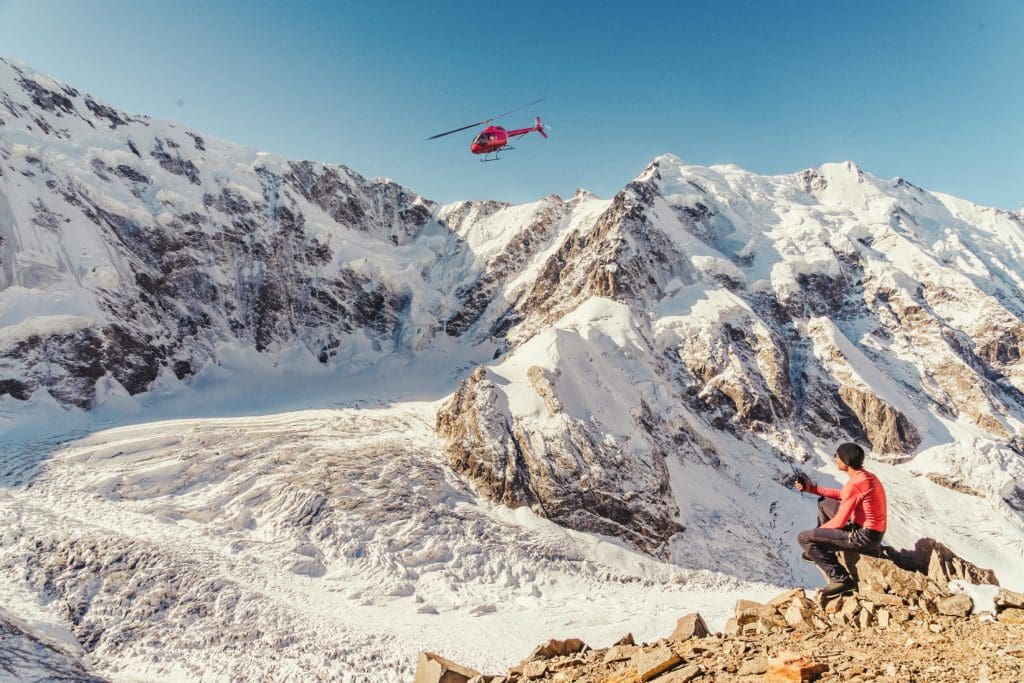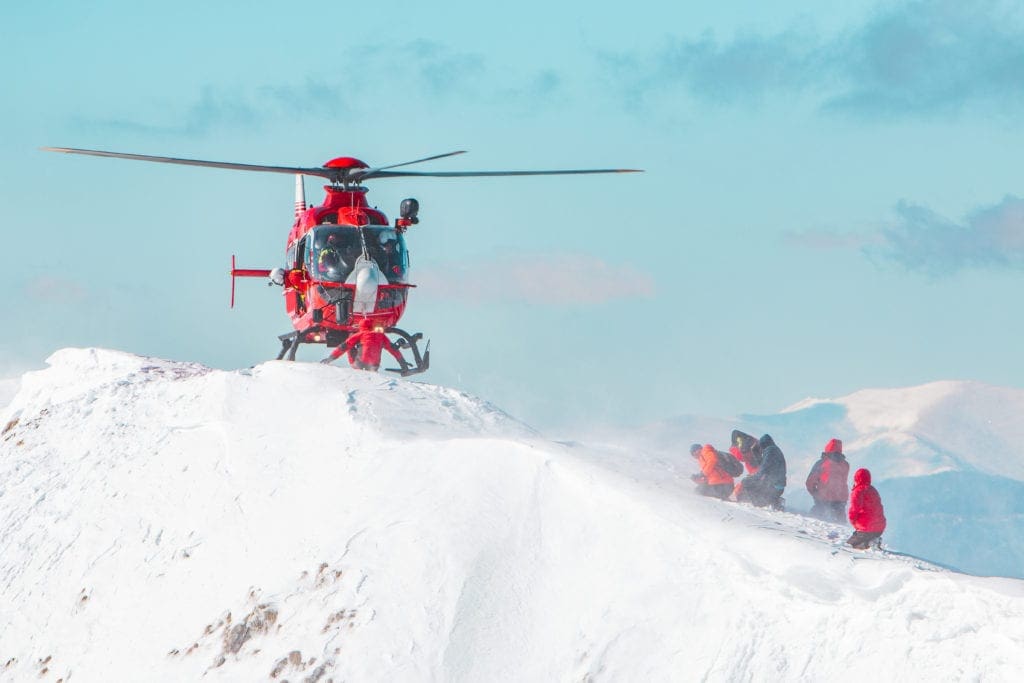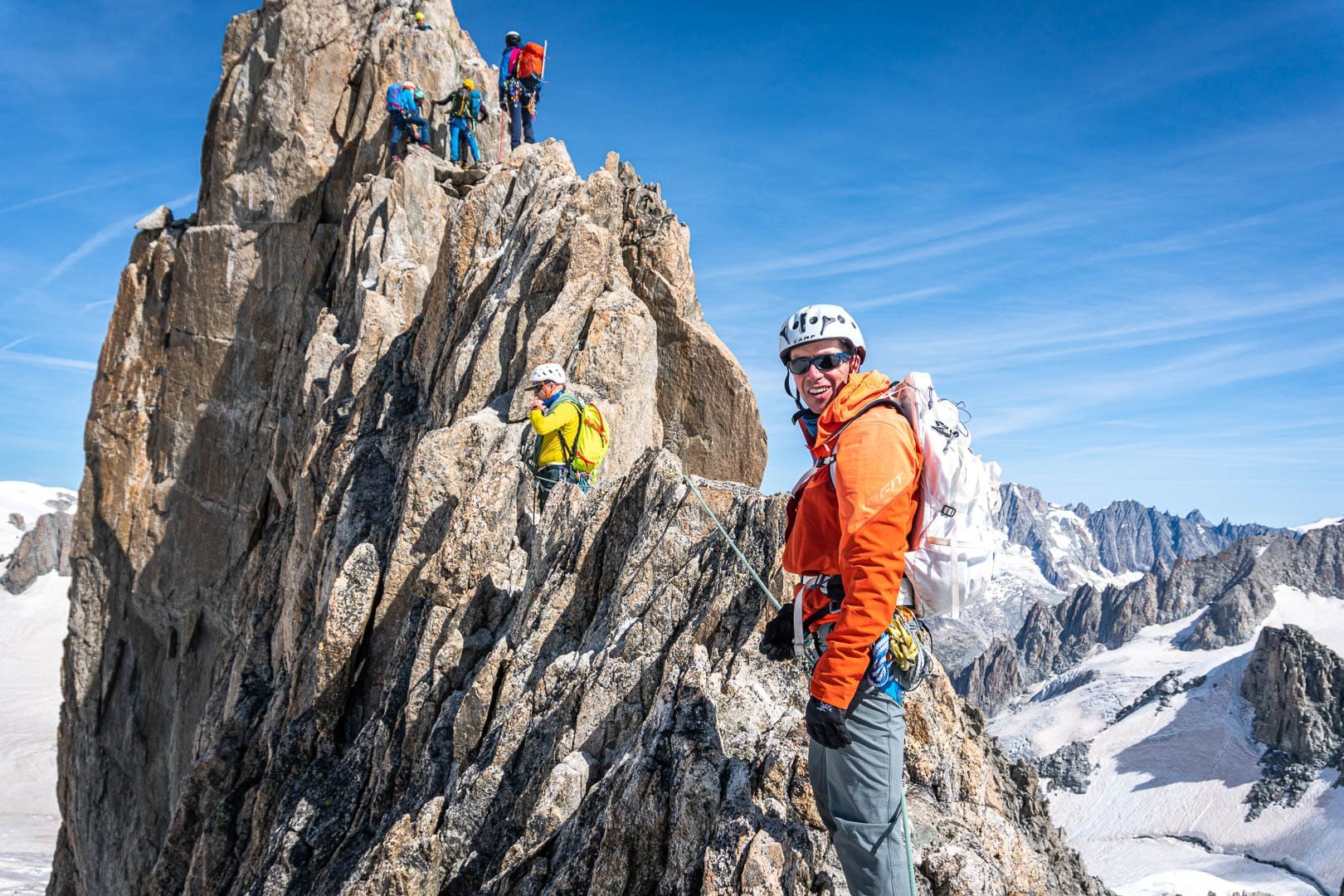Global Rescue is expanding and improving its services for high altitude climbers by reaching more regions, prolonging the presence of medical personnel, and extending rescue operations in the field.
Since 2004, Global Rescue has been an industry leader, providing medical and security advisory and evacuation services to travelers around the world. Global Rescue offers field rescue from the point of your injury or illness. With operations centers staffed 24/7/365 by experienced personnel, when you call Global Rescue you speak to a real person on the first call to get you the help you need.
Global Rescue pioneered worldwide field rescue for their members in remote or dangerous environments. Their deployable teams are standing by to rescue Global Rescue members from the point of illness or injury for any serious medical emergency. Global Rescue’s fully deployable medical teams have unparalleled capabilities to transport their members back to their home hospital of choice from anywhere in the world.
For many years, Global Rescue has been recognized as the top provider of rescue services within the global climbing and trekking community. By incorporating the High-Altitude Evacuation Package, they are able to further enhance their current capabilities to better serve the community. This means sending their operations professionals to Nepal for longer periods during peak climbing season, as well as other popular destinations for climbers.
Global Rescue is expanding and improving its services for the high-altitude climbing community by extending its reach to more regions, prolonging the presence of medical operations personnel, and extending the duration of rescue operations in the field.

A mountaineer sitting with a walkie-talkie in his hands calls the rescue service waiting for an ambulance helicopter.
Growth In Mountaineering and Trekking
Adventure sports like mountaineering and trekking have gained popularity in recent years. In 2022, there was a significant increase in the number of participants and rescues, with indications showing that these numbers will continue to rise in 2023.
Leaders of expeditions have observed a trend of climbers opting to avoid Mount Everest and instead direct their attention towards other mountains taller than 8,000 meters. Stretch pointed out that the rise in the number of climbers on Mount Everest is reflected in other areas of the Himalayas, with multiple busy peaks in Nepal and Pakistan.
Many women are also participating in climbing and trekking activities. Stretch noted the presence of high-profile female climbers, such as Kristin Harila, and mentioned that the sport’s appeal among women continues to increase each year.
By incorporating the High-Altitude Evacuation Package, Global Rescue can further improve its existing services for the global climbing and trekking community. To ensure comprehensive coverage during trips, any member traveling above 15,000 feet or 4,600 meters (excluding air travel) should invest in the High-Altitude Evacuation Package as an add-on to their membership.
For an individual, the High-Altitude Evacuation Package can be purchased for $395. For a family, the cost is $795. Regardless of membership type or duration, any member can upgrade their plan with this package. If you have a multi-year membership, you’ll need to add the High-Altitude Evacuation Package for each year of your plan. With traditional insurance, you may not be rescued at a high altitude and could end up paying up to $300,000 for a medical evacuation. However, Global Rescue members with the High-Altitude Evacuation Package have no additional costs for emergency evacuations at any altitude.
It is worth mentioning that altitudes higher than 23,000 feet (7,010 meters) are typically beyond the capabilities of most operating helicopters. In addition, it should be noted that evacuations at these elevated altitudes require pilot approval and are highly dependent on weather conditions. If evacuation is necessary above this height, Global Rescue will make use of ground resources available for the initial stage of an evacuation.

A rescue helicopter landing in the mountains.
Global Rescue Anticipates Record Climbers – and Rescues
“High-altitude outdoor activity worldwide is reaching unprecedented heights of participation and Global Rescue’s High-Altitude Evacuation Package supports this expanding interest with greater depth and breadth of services,” said legendary mountaineer and a member of the Global Rescue Mountain Advisory Council Ed Viesturs, the only American to climb all 14 of the world’s 8,000+ meter peaks and the fifth person to do so without supplemental oxygen.
In the spring of 2024, the Himalayas will be filled with mountaineers and trekkers from all over the world, determined to reach the top of Mount Everest, as well as other towering peaks like K2, Kanchenjunga, and Annapurna. These mountains are not only some of the tallest in the Himalayas but also in the entire world.
It’s certainly not an easy feat. Frostbite, twisted ankles, high altitude pulmonary edema (HAPE), gastrointestinal troubles, high altitude cerebral edema (HACE), snow blindness, and a multitude of other ailments will constantly challenge climbers and trekkers as they make their way up and down the mountain. Ignoring symptoms of altitude sickness and not preparing adequately are two major mistakes that mountaineers and trekkers often make during these expeditions, according to Dan Stretch, an operations manager for Global Rescue who is stationed in Nepal during the Mount Everest climbing season and has overseen numerous evacuations and crisis interventions.
It is not wise to continue ascending higher while experiencing symptoms of altitude sickness in hopes of improvement. In most cases, the symptoms will not improve and could potentially worsen. It is crucial for everyone to pay attention to warning signs and plan for extra acclimatization days in their itinerary. This can make a significant difference between a successful summit and having to cut the expedition short due to hospitalization.
Over-the-counter medications such as antidiarrheal tablets, oral rehydration salts, and paracetamol can help manage many high-altitude conditions. It is essential for trekkers and climbers to carry these medications in their first aid pack and have a way to communicate with organizations like Global Rescue for medical guidance before things escalate.
Last year saw a record number of climbing permits issued and consequent rescue operations by Global Rescue. Experts predict that 2024 will also see a rise in these numbers.
There’s no experience quite like standing atop a mountain. The grandeur of towering peaks and the feeling of achievement after conquering one is unparalleled. Take on the challenge with expert local guides at 57hours, who offer mountaineering trips around the world to push your physical and mental limits.



On Location in Nepal
A team from Global Rescue will be sent to Nepal to coordinate rescue missions, such as helicopter and ambulance transports, hospital admissions, and providing support for members who are hospitalized for treatment.
Stretch, a seasoned mountaineer with successful climbs in the Himalayas, Europe, South America, and Africa under his belt, will be joining the ground operations team. He has completed over 200 high-altitude rescues annually and has overseen more than 500 such rescues in the Himalayas.
Assisting Stretch on the Global Rescue operations center medical team is Dr. Eric Johnson, an expert in wilderness and altitude sickness. He serves as Global Rescue’s associate medical director and has previously held the position of president at the Wilderness Medical Society. Dr. Johnson has also spent two seasons with the Pheriche Himalaya Rescue Association (HRA), three seasons at HRA-USA (Everest ER), and contributed to building a new hospital in the SoluKhumbu region.

A Global Rescue specialist rescues an injured climber at Mount Everest Base Camp. Global Rescue is the leader in travel risk, crisis management and response. According to the New York Times, Global Rescue employs former Navy Seals, Army Rangers, and Defense Intelligence Agency analysts to pluck people from precarious situations worldwide. Photo courtesy of Global Rescue.
An Average Day For The Global Rescue Team
A typical day for the Global Rescue deployment team is far from ordinary. Throughout the two-month spring climbing season on Mount Everest, there are typically multiple rescue operations to be carried out each day, keeping the team occupied from dawn until late at night. Whenever they have a chance to rest, the on-the-ground team prepares for the intense two-week summit window when they can perform up to 25 rescues a day alongside the medical and rescue operations team.
The deployment team is already up and communicating with the Global Rescue operations centers before sunrise, checking for any new rescue requests that may have come in overnight. As helicopters can only fly during daylight hours, there could be multiple rescue missions waiting for them. With oversight from the operations center, they prioritize the most urgent cases for immediate transport. But retrieving climbers and trekkers in need of help goes beyond simply airlifting them off the mountain. The deployment team is spread out across various locations to provide support during every step of the rescue process, from locating missing individuals to transporting them safely back home after recovery.
According to Stretch, one team member is currently stationed at the Kathmandu airport, managing helicopter operations. Another is stationed in Lukla to assist with rescued members and their medical needs. The remaining on-the-ground team members are visiting and supporting hospitalized Global Rescue members in local medical facilities, helping them with arrangements for a safe return home.
In between busy periods, the deployment team takes trips to nearby medical facilities to assess their performance, establish connections with the local community, and spend quality time with the helicopter providers.
Mountaineers and hikers invest extensive amounts of money to participate in these incredible expeditions. It takes years of training and preparation for such a monumental feat. However, not everyone is successful in reaching the summit. Sickness or injury can quickly end the journey. Despite the disappointment, Stretch reports that rescues are typically met with gratitude. He explains, “Most climbers are grateful to be taken from a dangerous, sub-zero, high-altitude environment to the safety and warmth of a hospital bed. They show great appreciation.”
Skyblue Overland Strongly Recommends That You Enroll With Global Rescue Prior To Embarking On Your Next Adventure.
Purchase a Global Rescue membership for your next adventure and travel with peace of mind. Single trip, annual and family options are available.
Learn More!
Popular Articles:
The Newbie Alpinist’s Guide to Climbing Cotopaxi, Ecuador
Skyblue Overland Partners With Global Rescue To Offer Adventure Travel Protection
Best Options For Technical and High-Altitude Climbs During 2021
Skiing On The Highest Active Volcano In Eurasia
Scrambling Hallett Peak’s East Ridge, Rocky Mountain National Park, Colorado








